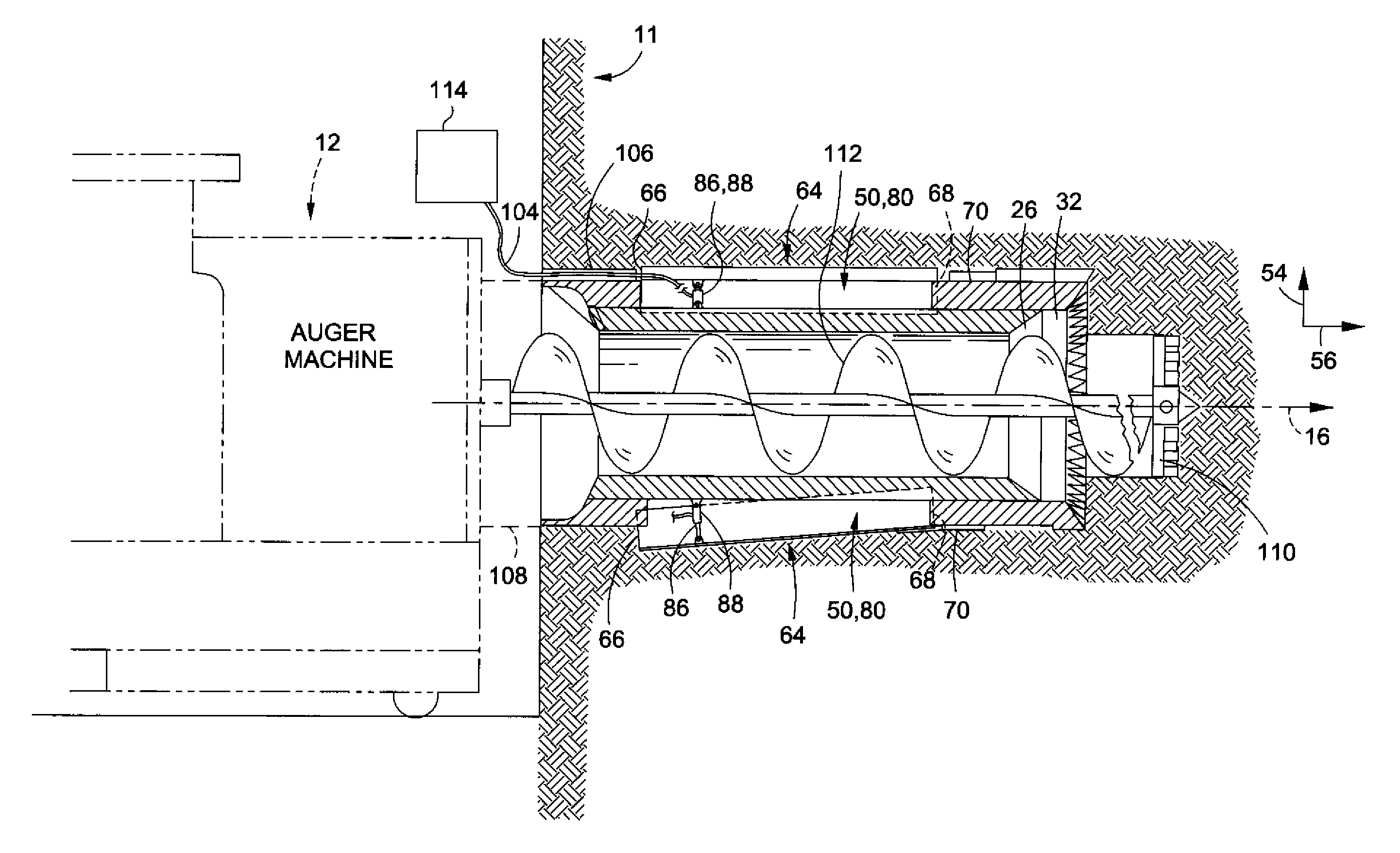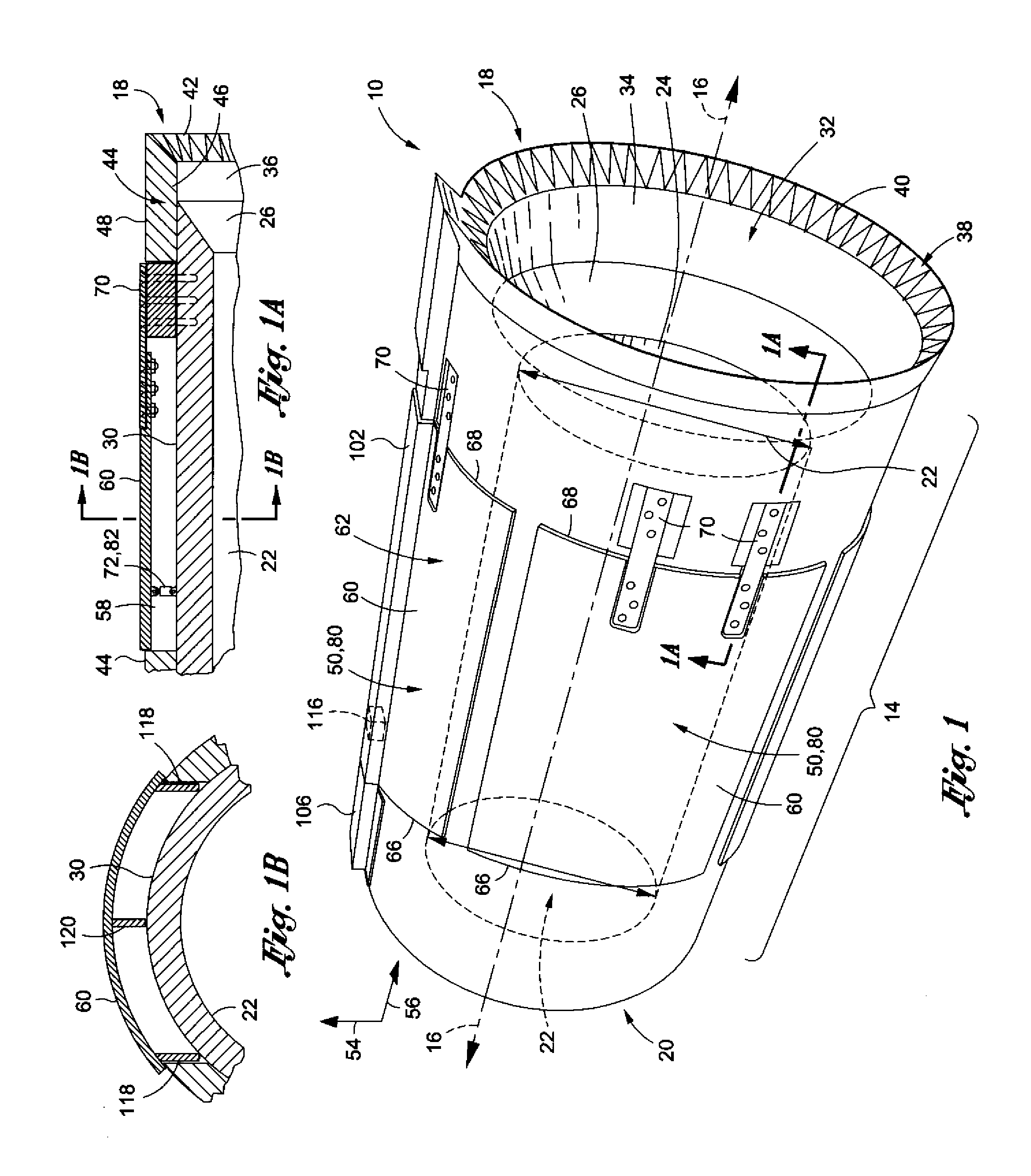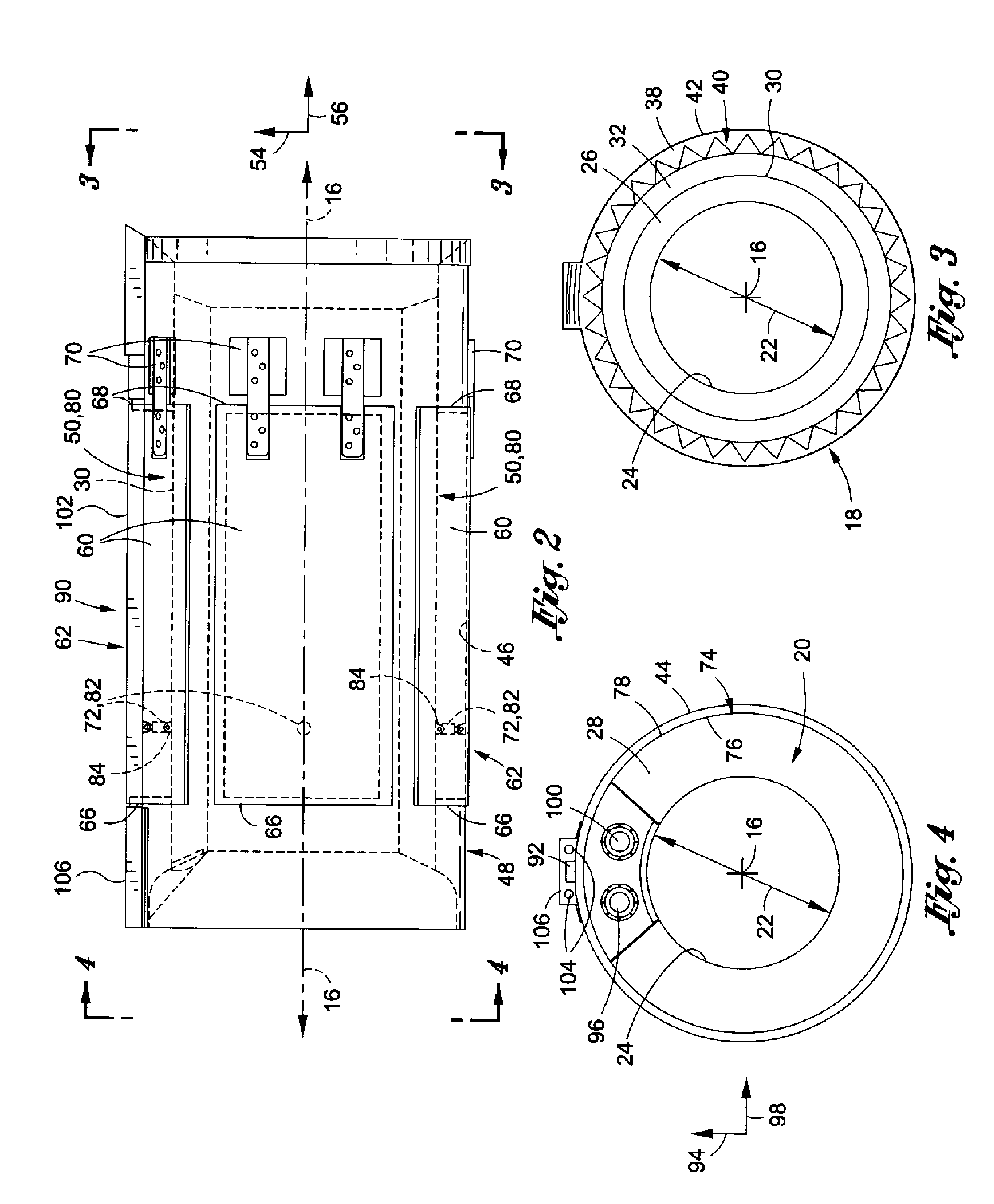Steering head
a steering head and head technology, applied in the direction of drilling casings, drilling pipes, directional drilling, etc., can solve the problems of reducing the efficiency of operation and maneuverability of these steering heads, the inability to adjust the position of the steering head along a horizontal axis in these prior art steering heads, and the limited amount of vertical adjustmen
- Summary
- Abstract
- Description
- Claims
- Application Information
AI Technical Summary
Benefits of technology
Problems solved by technology
Method used
Image
Examples
Embodiment Construction
[0033]The drawings referred to herein are for the purposes of illustrating the preferred embodiments of the present invention and not for the purposes of limiting the same.
[0034]FIGS. 1 and 2 are an embodiment of the steering head 10 having a generally cylindrical body 14 defining a longitudinal body axis 16. The body 14 may have a first body end 18 and an opposing second body end 20. The second body end 20 of the steering head 10 may be mounted to a casing 108 as depicted in FIG. 6, preferably by welding. As shown in FIG. 6, the casing 108 is also engaged to an auger machine 12, with an auger unit 112 engaged to and extending from the auger machine 12 through the casing and the steering head 10. The auger unit 112 may be equipped with a drill bit 110 for cutting through various types of soil 11, from running sand to round rock. The auger machine 12 rotates the auger unit 112, thereby enabling the auger unit 112 to perform a boring or tunneling operation through the surrounding soil...
PUM
 Login to View More
Login to View More Abstract
Description
Claims
Application Information
 Login to View More
Login to View More - R&D
- Intellectual Property
- Life Sciences
- Materials
- Tech Scout
- Unparalleled Data Quality
- Higher Quality Content
- 60% Fewer Hallucinations
Browse by: Latest US Patents, China's latest patents, Technical Efficacy Thesaurus, Application Domain, Technology Topic, Popular Technical Reports.
© 2025 PatSnap. All rights reserved.Legal|Privacy policy|Modern Slavery Act Transparency Statement|Sitemap|About US| Contact US: help@patsnap.com



